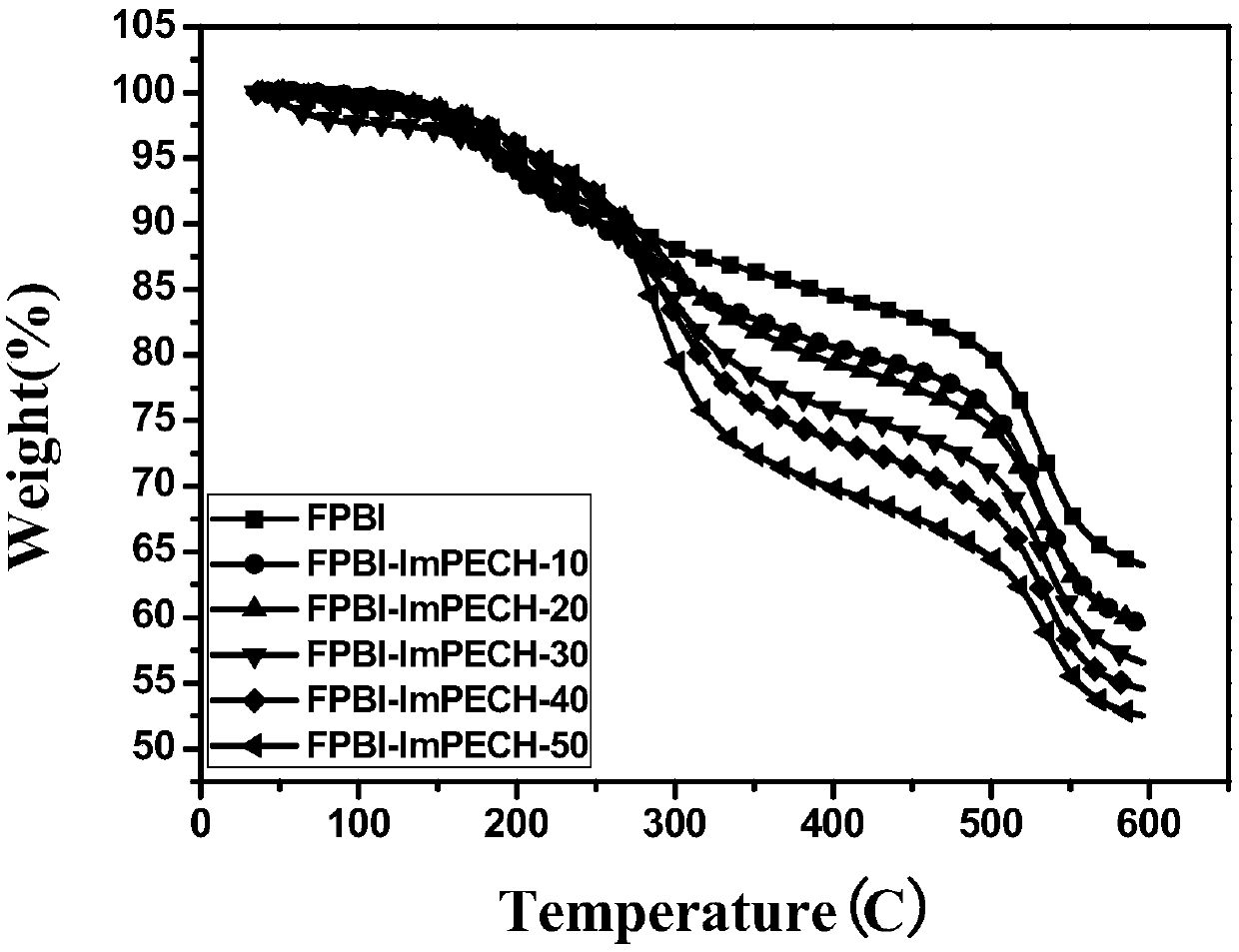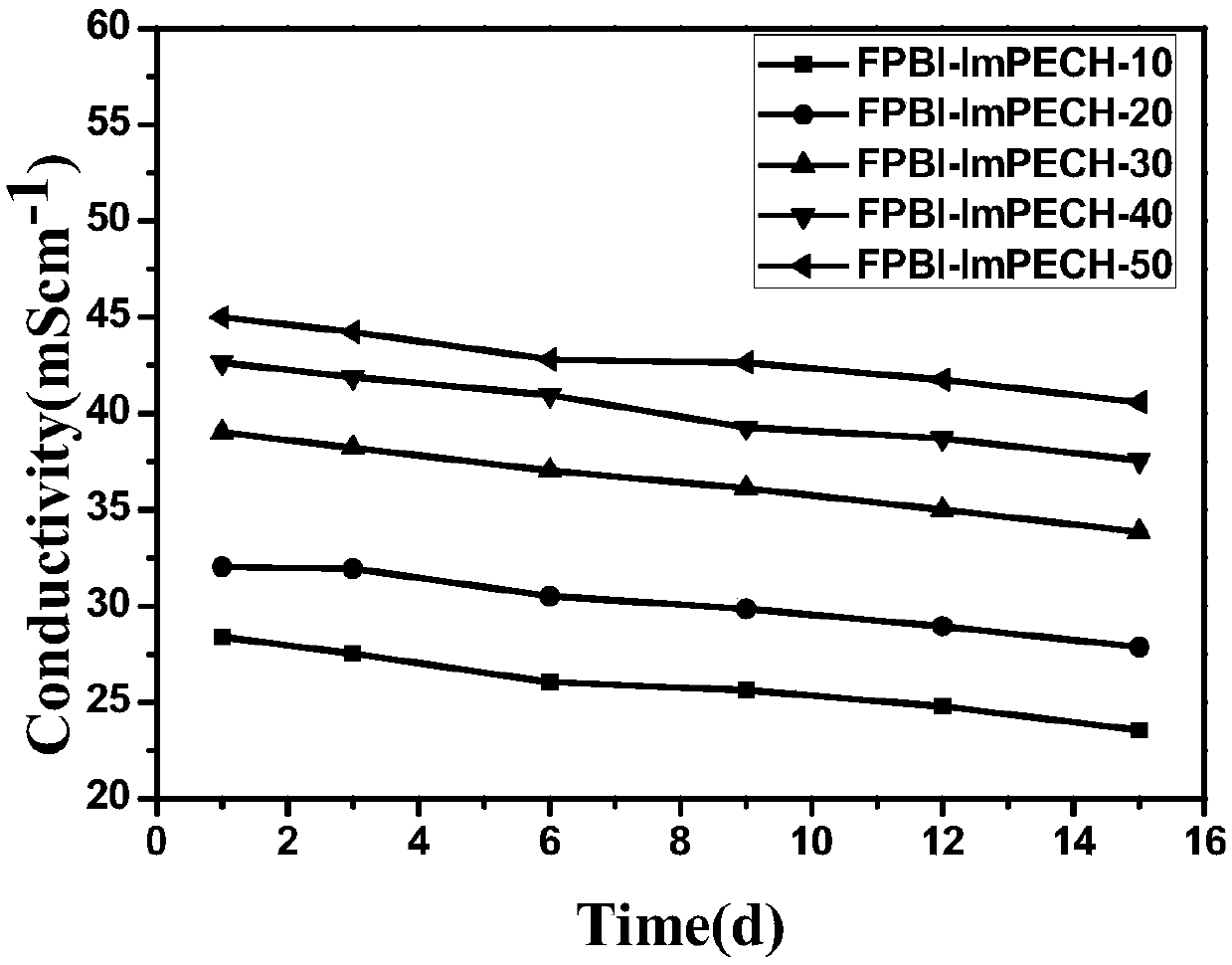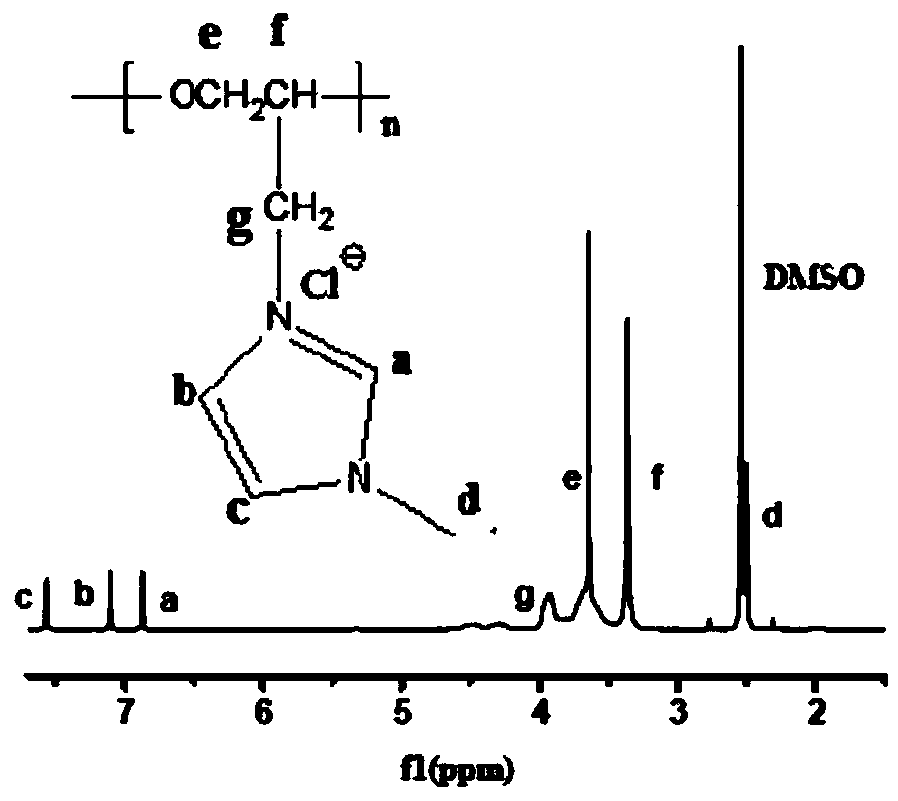A kind of preparation method of polybenzimidazole/modified polyepichlorohydrin composite anion exchange membrane
A technology of polyepichlorohydrin and anion exchange membrane, which is applied in the direction of electrochemical generators, fuel cells, electrical components, etc., can solve the problem of ion conductivity decline, limit the wide application of quaternary ammonium salt alkaline anion exchange membranes, and the environment Pollution and other issues, to achieve the effect of reducing hazards, good mechanical properties and chemical stability
- Summary
- Abstract
- Description
- Claims
- Application Information
AI Technical Summary
Problems solved by technology
Method used
Image
Examples
Embodiment 1
[0023] Preparation of 10% modified polyepichlorohydrin doped PBI composite anion exchange membrane
[0024] (1) Preparation of fluorine-containing polybenzimidazole (PBI) solution
[0025] Stir 27g of polyphosphoric acid PPA at 140°C under the protection of nitrogen until the solid is completely dissolved and deoxidized into a colorless transparent solution and cooled to room temperature; under the protection of nitrogen, add 2.14g of 3,3'-diaminobiphenyl Diamine and 3.92g of 2,2-bis(4-carboxyphenyl)hexafluoropropane, raise the reaction temperature to 100°C, 120°C, and 140°C, and react at each temperature for 12h, 12h, and 6h respectively; After cooling, pour the reaction system into deionized water to precipitate a brown filamentary polymer, soak or wash the polymer to remove excess acid, and obtain fluorine-containing polybenzimidazole polymer after vacuum drying; finally, the obtained fluorine-containing polyphenylene The imidazole polymer is added to dimethyl sulfoxide (D...
Embodiment 2
[0032] Preparation of 20% modified polyepichlorohydrin doped PBI composite anion exchange membrane
[0033] In the control step (3), the mass ratio of modified polyepichlorohydrin to fluorine-containing polybenzimidazole is 2:8, and the rest of the operations are the same as in Example 1.
[0034] The ion conductivity of the anion exchange membrane obtained in this example at room temperature is: 32.04mS cm -1 ; The ionic conductivity at 80°C is: 40.21mS·cm -1 ; Tensile strength: 35.44MPa; Young's modulus: 856.76MPa; Elongation at break: 6.033%.
Embodiment 3
[0036] Preparation of 30% modified polyepichlorohydrin doped PBI composite anion exchange membrane
[0037] In the control step (3), the mass ratio of modified polyepichlorohydrin to fluorine-containing polybenzimidazole is 3:7, and the rest of the operations are the same as in Example 1.
[0038] The ion conductivity of the anion exchange membrane obtained in this example at room temperature is: 39.01mS cm -1 ; The ionic conductivity at 80°C is: 45.74mS·cm -1 ; Tensile strength: 30.29MPa; Young's modulus: 731.67MPa; Elongation at break: 7.370%.
PUM
| Property | Measurement | Unit |
|---|---|---|
| tensile strength | aaaaa | aaaaa |
| tensile strength | aaaaa | aaaaa |
| tensile strength | aaaaa | aaaaa |
Abstract
Description
Claims
Application Information
 Login to View More
Login to View More - R&D
- Intellectual Property
- Life Sciences
- Materials
- Tech Scout
- Unparalleled Data Quality
- Higher Quality Content
- 60% Fewer Hallucinations
Browse by: Latest US Patents, China's latest patents, Technical Efficacy Thesaurus, Application Domain, Technology Topic, Popular Technical Reports.
© 2025 PatSnap. All rights reserved.Legal|Privacy policy|Modern Slavery Act Transparency Statement|Sitemap|About US| Contact US: help@patsnap.com



